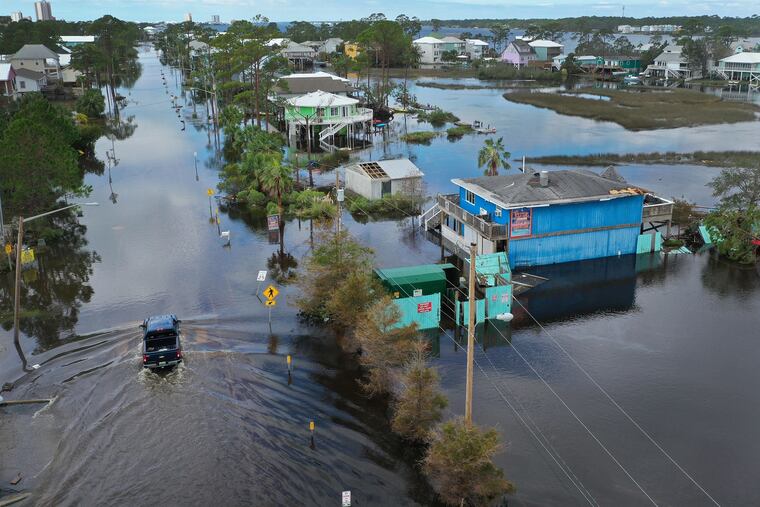Gulf Coast is a likely target for Delta, No. 25 of a record tropical storm season
"Delta" formed on the birthday of Hazel. In 1954, that became one of the most-destructive storms in Philly history. October is busy month for hurricanes.

Yet another tropical storm has formed in the Atlantic Basin, the record 25th of the season, and the National Hurricane Center forecast is likely to become a major hurricane and generate fresh ripples of anxiety along the north Gulf Coast in the next few days.
Delta — the hurricane center has gone through its naming alphabet and now is using Greek letters — was about 160 miles from Negril, Jamaica late Monday, with peak winds of 45 mph, or 6 mph above the tropical-storm minimum requirement. It is expected to become a major hurricane, with 120 mph winds Wednesday, and approach the U.S. coast Friday.
It earned its letter Monday, coincidentally, the 66th birthday of Hazel, which later grew into a hurricane and became one of the most-destructive storms in Philadelphia history. More than a fifth of all tropical storms have developed in October, including Sandy, which first appeared on Oct. 22, 2012.
» READ MORE: With tropics reawakening, what we can learn from Hurricanes Sandy, Hazel, and other destructive October storms
Delta popped up two days after Gamma. (As sorority and fraternity veterans well know, the “G” letter comes before "D" in the Greek alphabet; the hurricane center uses only 21 letters in its naming system, omitting q, u, x, y, and z, and then resorts to the Greek letters.)
Never in the period of satellite records dating to 1966 has the season in the Atlantic Basin, which includes the Caribbean and the Gulf of Mexico, gotten to Delta this fast. The previous record was Nov. 15, set in 2005, which also set the standard for tropical storm numbers, 28.
While the raw numbers of tropical storms have been impressive — nearly triple the average to date — this season hasn’t approached 2005, the year of Katrina and Wilma, for fatalities and overall destruction.
So far, only two of the 2020 storms have reached “major hurricane” status, those with winds of at least 111 mph. That’s in line with the long-term average. Eight became majors in 2005.
» READ MORE: Gulf Coast residents mark 15th anniversary of Katrina
Gamma is expected to succumb to strong shearing winds and lose its letter status Tuesday, but Delta is forecast to mine Gulf waters and intensify significantly. It could plow some of the same territory as Sally, which made landfall in Alabama on Sept. 16.
“There is an increasing risk of dangerous storm surge, wind, and rainfall hazards along the coast from Louisiana to the western Florida Panhandle,” the hurricane center said Monday.
» READ MORE: Fall foliage season shaping up to be beauty
Neither Gamma, nor Delta, nor some future Epsilon are expected to have an impact on Philadelphia’s weather, at least for the next several days, although Delta’s remnants could affect parts of the region late in the weekend, the National Weather Service says.
Otherwise, the forecast calls for a run of splendidly sunny days and cool-ish nights through the weekend. According to the experts, those would be perfect conditions for coaxing along the impending foliage show.